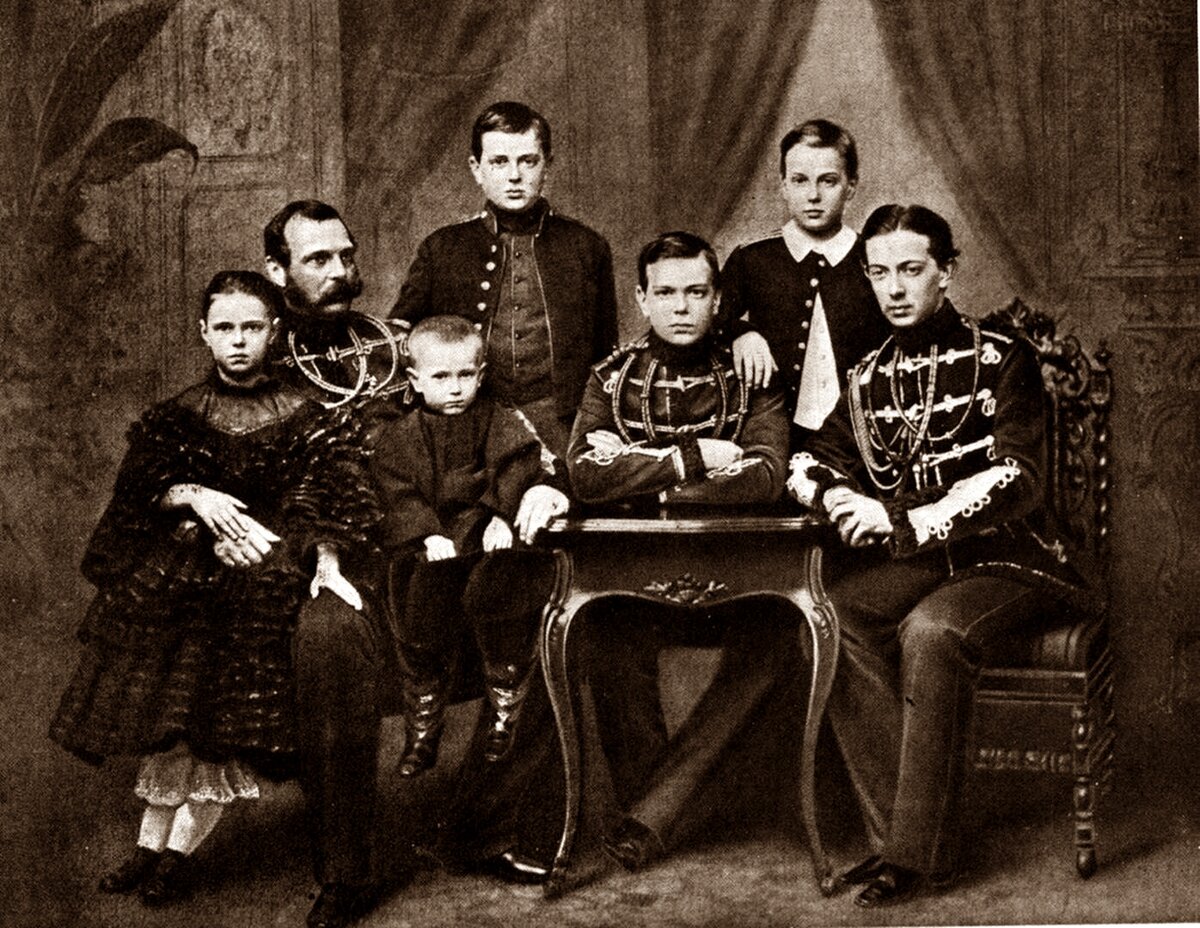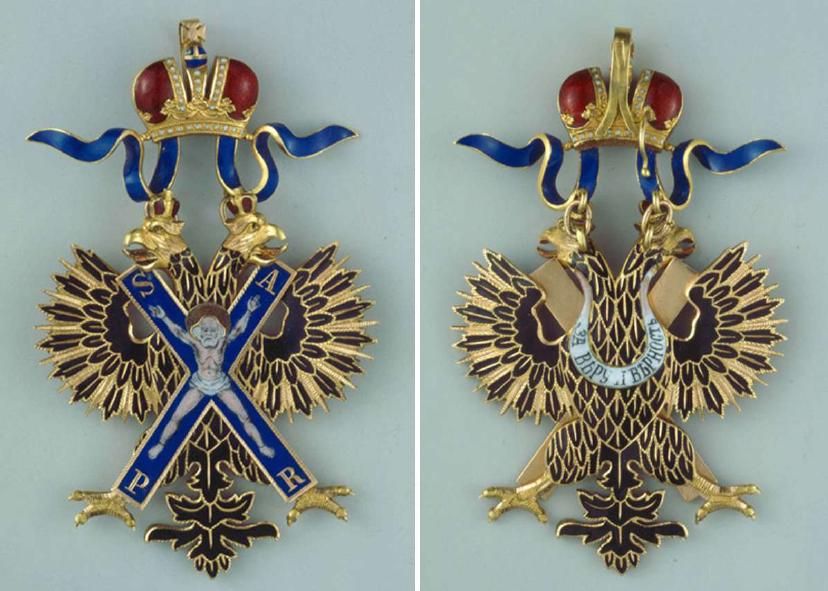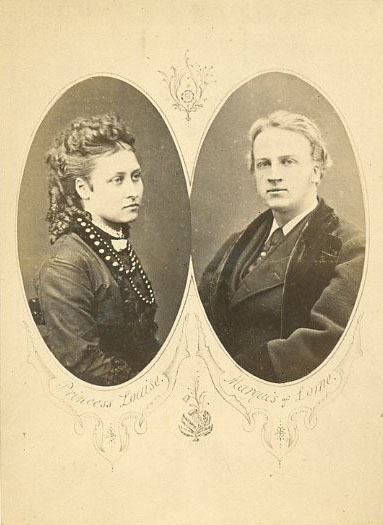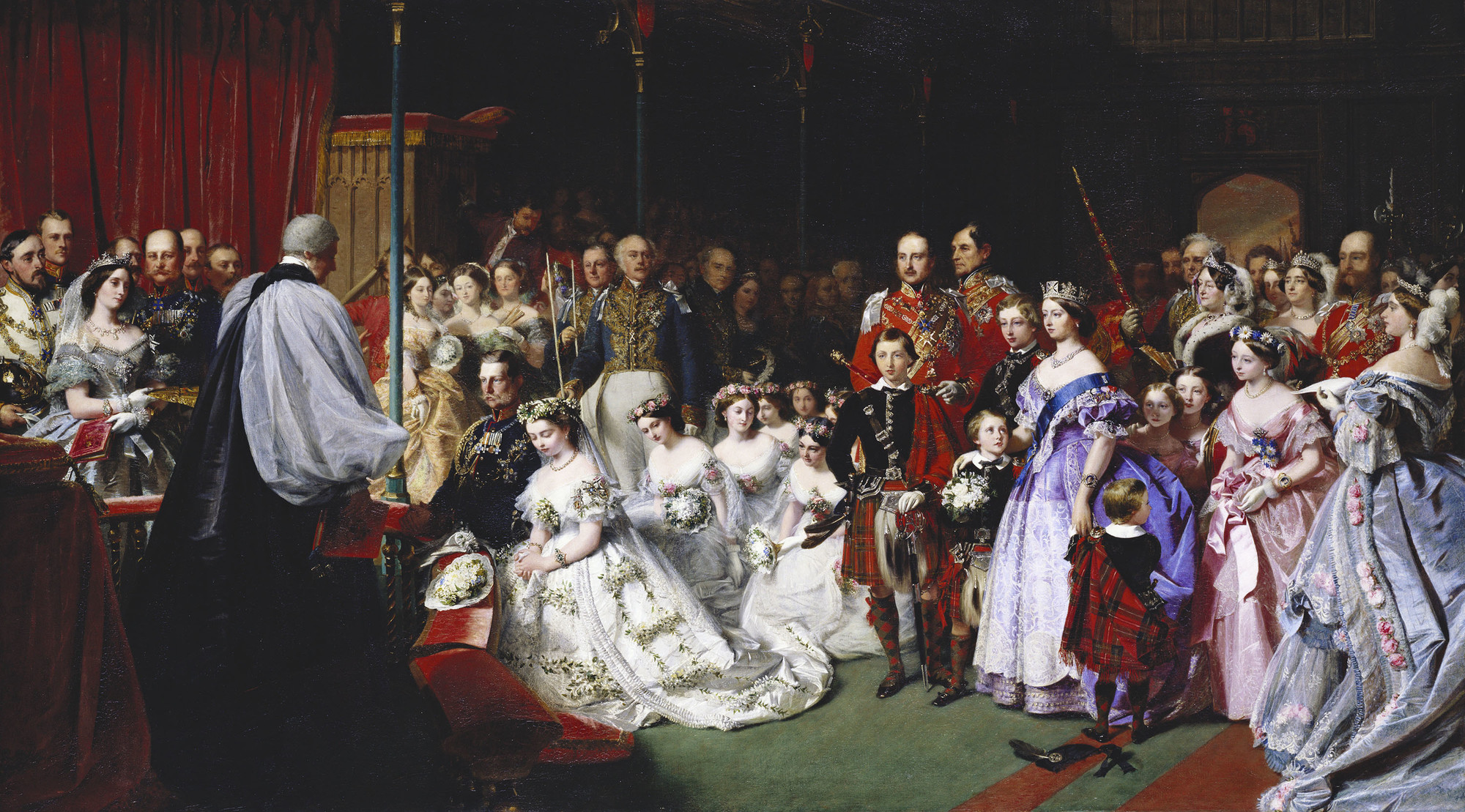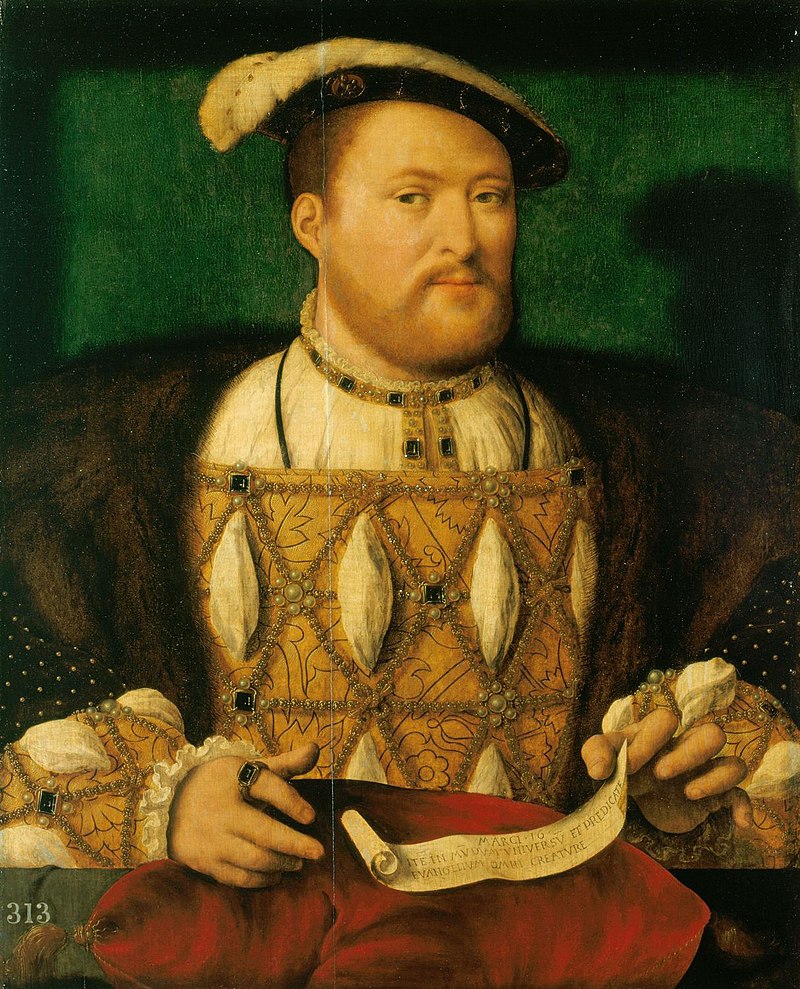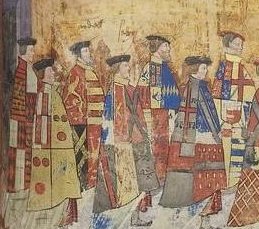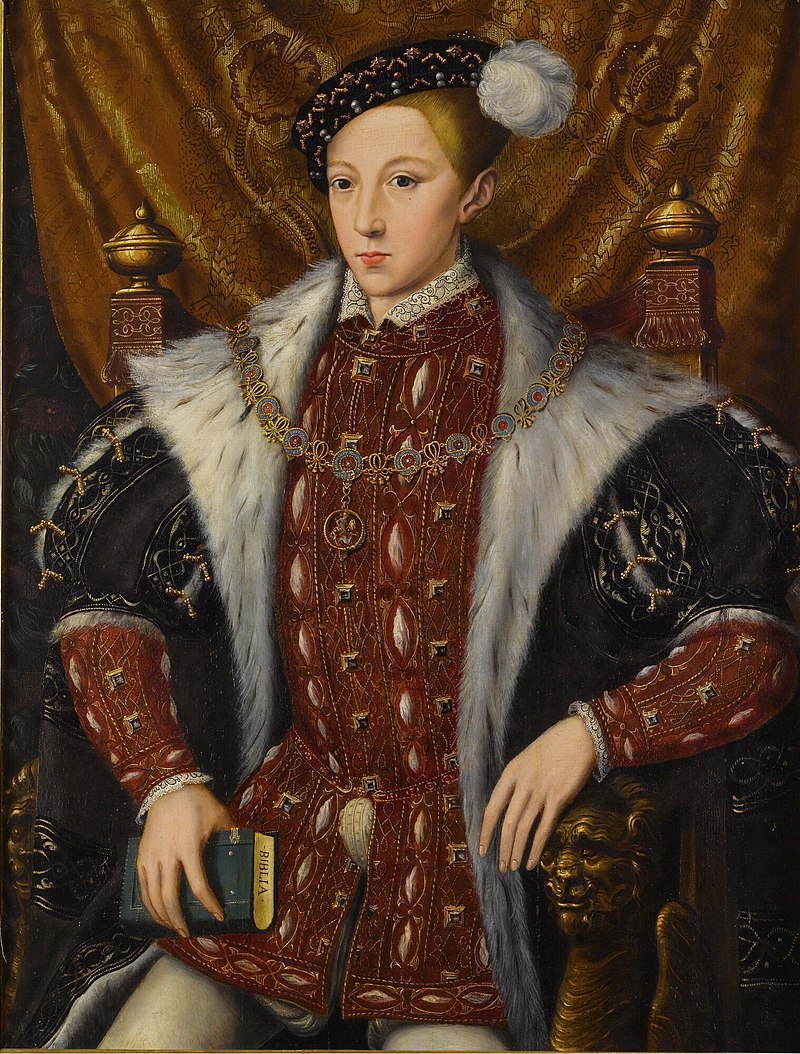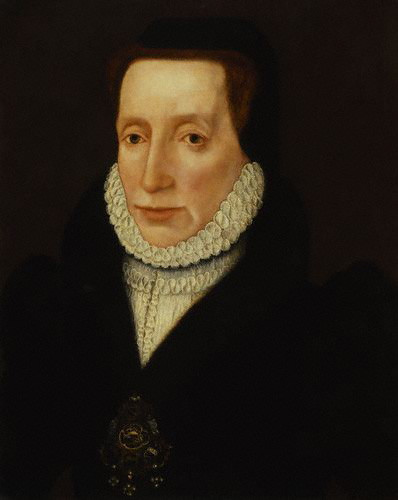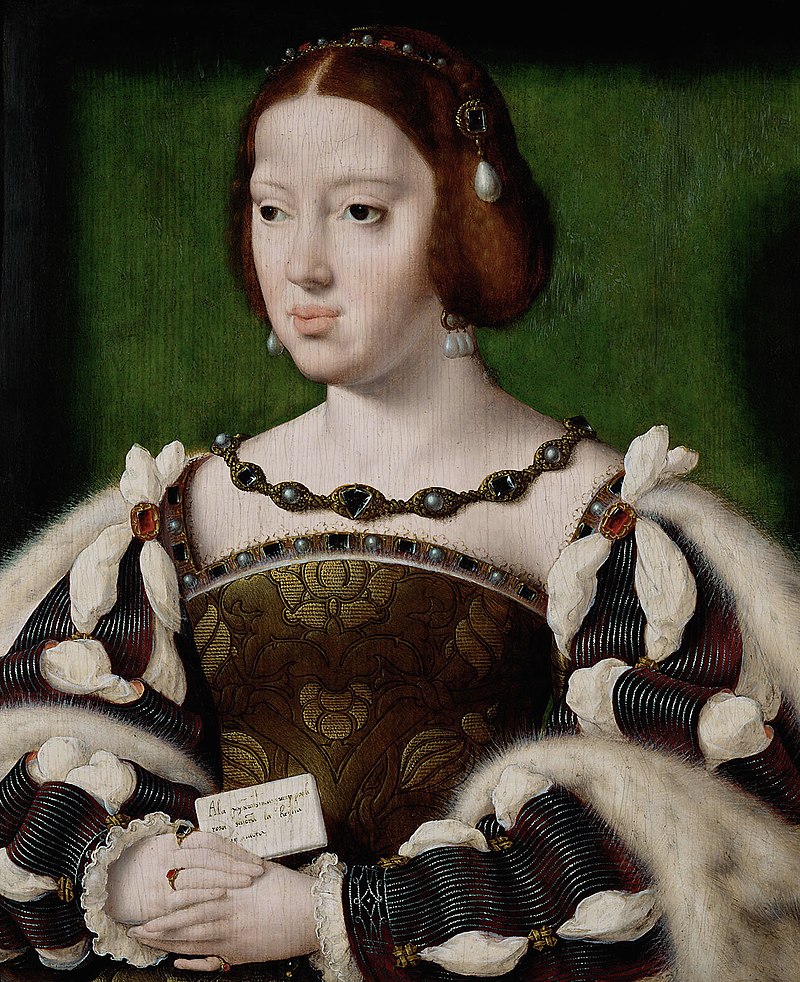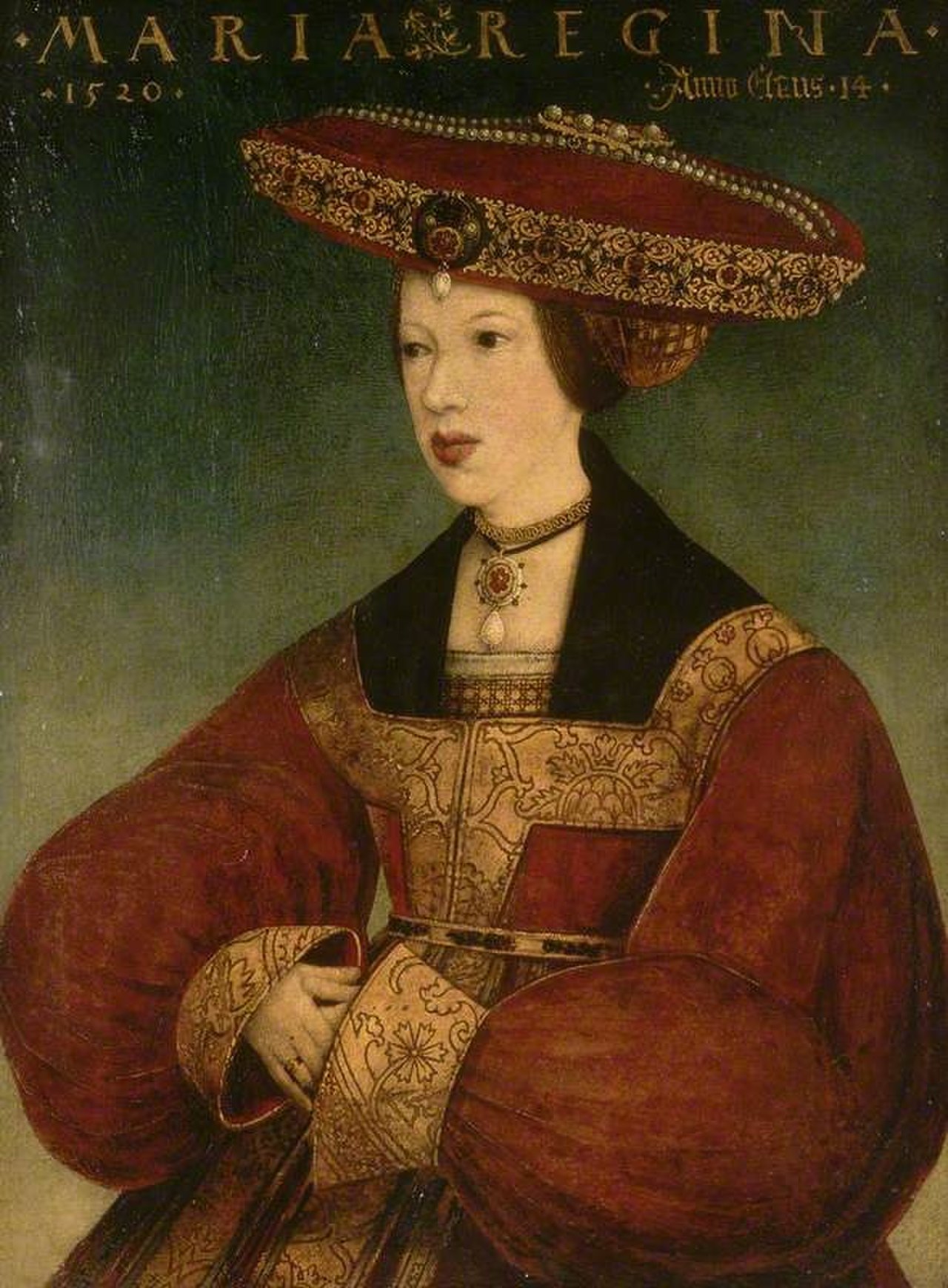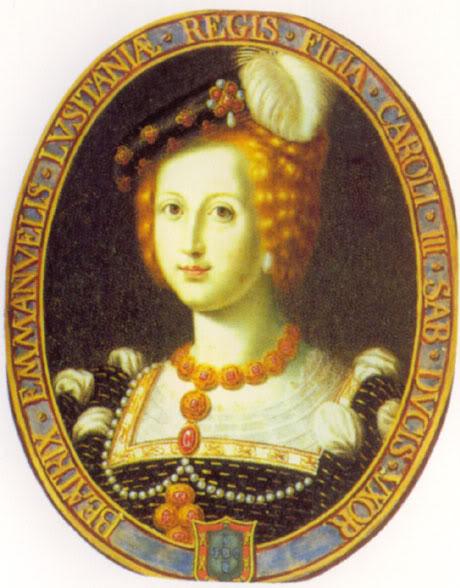by Susan Flantzer
© Unofficial Royalty 2019

The Marriage of the Duke of Connaught by Sydney Pryor Hall – The bride is approaching the altar, escorted by her father Prince Friedrich Karl of Prussia and Crown Prince Friedrich of Prussia. The bridegroom awaits her, accompanied by his two older brothers and Queen Victoria; Credit – Royal Collection Trust
Prince Arthur, Duke of Connaught and Princess Louise Margaret of Prussia married on March 13, 1879, at St. George’s Chapel, Windsor Castle in Windsor, England.
Arthur’s Early Life

The First of May 1851 by Franz Xaver Winterhalter commemorates the 1st birthday of Prince Arthur, and the 82nd birthday of Arthur’s godfather Arthur Wellesley, 1st Duke of Wellington, and the opening day of the Great Exhibition, which was organized by Prince Albert. The painting shows Prince Arthur and his parents, the Duke of Wellington offering a gift to Prince Arthur, and The Crystal Palace, site of the Great Exhibition in the background; Credit – Wikipedia
Prince Arthur was born on May 1, 1850, at Buckingham Palace in London, England, the third son of the four sons and the seventh of the nine children of Queen Victoria of the United Kingdom and Prince Albert of Saxe-Coburg-Gotha. Arthur was educated by private tutors. In 1866, at the age of 16, Arthur entered the Royal Military College, Woolwich. He graduated two years later and was commissioned as a lieutenant in the Corps of Royal Engineers. During his forty-year military career in the British Army, Arthur participated in many missions in various parts of the British Empire. On his mother’s birthday, May 24, 1874, Arthur was created a royal peer, with the titles Duke of Connaught and Strathearn and Earl of Sussex.
To learn more about Arthur, see Unofficial Royalty: Prince Arthur, Duke of Connaught
Louise Margaret’s Early Life

Princess Luise Margarete of Prussia; Credit – Wikipedia
Princess Luise Margarete of Prussia was born on July 25, 1860, at the Marmorpalais (Marble Palace), a royal residence in Potsdam, Kingdom of Prussia, now in Brandenburg, Germany. She was the fourth of the four daughters and the fourth of the five children of Prince Friedrich Karl of Prussia and Princess Maria Anna of Anhalt-Dessau. Prince Friedrich Karl’s father, Prince Karl of Prussia, was a younger son of King Friedrich Wilhelm III of Prussia and a brother of King Friedrich Wilhelm IV of Prussia and Wilhelm I, German Emperor and King of Prussia. Luise Margarete’s mother was also descended from Prussian kings as her great-grandfather was King Friedrich Wilhelm II of Prussia.
Luise Margarete’s parents had an unhappy marriage. After the birth of Luise Margarete, the fourth daughter, Prince Friedrich Karl reportedly beat his wife for not producing a son. Apparently, only the urgings of Friedrich Karl’s uncle King Wilhelm I of Prussia prevented a formal separation. Finally, five years after the birth of Luise Margarete, a son was born.
Upon her marriage, her name was anglicized to Louise Margaret.
To learn more about Louise Margaret, see Unofficial Royalty: Princess Louise Margaret of Prussia, Duchess of Connaught
The Engagement

Prince Arthur, 1st Duke of Connaught and Strathearn; Princess Louise, Duchess of Connaught (née Princess of Prussia) after Léon Abraham Marius Joliot, albumen carte-de-visite, 1870s, NPG Ax131371© National Portrait Gallery, London
In 1878, Arthur met Princess Louise Margaret of Prussia on a visit to his eldest sister Victoria, German Crown Princess and Crown Princess of Prussia. Louise Margaret was friendly with the Crown Princess and her eldest daughter Charlotte. Arthur wrote to his mother, “I must say I thought her rather pretty.” Queen Victoria considered Louise Margaret to be a less than satisfactory possible bride for her son. She was plain-looking and had bad teeth. Her parents were unpleasant, had an unhappy marriage, and lived apart from each other. Victoria wanted to avoid associating her family with a possible scandal.
Upon returning home, Arthur had a conversation with his mother and Queen Victoria wrote about that conversation in her diary: “Dear Arthur arrived and stopped with us while we were taking tea. Afterward remained talking with me a little while, and told me that he had taken a great liking to young Louise of Prussia, Fritz Carl’s youngest daughter, who was brought up by an English governess…He said he did not wish to marry yet, and no one had breathed a word about it, but he liked her better and better, and meant, if I had no objection, to ask to see her this summer again. I could not help saying that I dislike the Prussians and told him he should see others first, but he said it would make no difference. What could I then say, but that, of course, his happiness was the first thing? He assured me he liked her better than anyone he had seen, but that he would not do anything without my consent, and looked so sad and earnest, yet so dear and gentle, that, having heard nothing but good of the girl, I could not object.”
Arthur’s eldest sister wrote to her mother: “I could not choose for a sister-in-law anyone I like better than Louise. She will make Arthur a most delightful wife. Each is the complement of the other, and I foresee that each will make the other supremely happy.”
When Queen Victoria met Louise Margaret, she became more positive and the engagement was announced. The Queen admitted to her diary, “Had I seen Louischen before Arthur spoke to me about his feelings, I should not have grieved him by hesitating for a moment in giving my consent. She is a dear, sweet girl of the most amiable and charming character…I am sure dear Arthur could not have chosen more wisely.”
Wedding Site
St. George’s Chapel at Windsor Castle in Windsor, England was begun in 1475 by King Edward IV and completed by King Henry VIII in 1528. It is a separate building and located in the Lower Ward of Windsor Castle. The chapel seats about 800 people and has been the location of many royal ceremonies, weddings, funerals, and burials. Members of the Order of the Garter meet at Windsor Castle every June for the annual Garter Service held at St. George’s Chapel.
There had been no royal weddings at St. George’s Chapel until 1863 when Queen Victoria’s eldest son, the future King Edward VII, married Princess Alexandra of Denmark. Four more of Queen Victoria’s children were married at St. George’s Chapel and it has become a popular site for royal weddings.
Wedding Guests
Royal Guests
- Queen Victoria, the groom’s mother
- The Prince of Wales, the groom’s brother, the future King Edward VII
- The Princess of Wales, the groom’s sister-in-law, born Princess Alexandra of Denmark
- Prince Albert Victor of Wales, the groom’s nephew
- Prince George of Wales, the groom’s nephew, the future King George V
- Princess Louise of Wales, the groom’s niece
- Princess Victoria of Wales, the groom’s niece
- Princess Maud of Wales, the groom’s niece
- Prince Alfred, Duke of Edinburgh, the groom’s brother
- The Duchess of Edinburgh, the groom’s sister-in-law, born Grand Duchess Maria Alexandrovna of Russia
- Crown Princess Victoria of Germany and Prussia, the groom’s sister Victoria, Princess Royal
- Crown Prince Friedrich of Germany and Prussia, the groom’s brother-in-law and the bride’s second cousin, the future Friedrich III, German Emperor and King of Prussia
- Prince Wilhelm of Prussia, the groom’s nephew, the future Wilhelm II, German Emperor and King of Prussia
- Princess Christian of Schleswig-Holstein, the groom’s sister Princess Helena
- Prince Christian of Schleswig-Holstein, the groom’s brother-in-law
- Princess Helena Victoria of Schleswig-Holstein, the groom’s niece
- Princess Marie Louise of Schleswig-Holstein, the groom’s niece
- Princess Beatrice, the groom’s sister
- Prince George, 2nd Duke of Cambridge, the groom’s first cousin once removed
- Duchess of Teck, born Princess Mary Adelaide of Cambridge, the groom’s first cousin once removed
- Duke Francis of Teck, husband of the Duchess of Teck
- Princess Victoria Mary of Teck, the groom’s second cousin, the future Queen Mary, wife of King George V
- Prince Adolphus of Teck, the groom’s second cousin
- Prince Francis of Teck, the groom’s second cousin
- Prince Alexander of Teck, the groom’s second cousin
- Prince Friedrich Karl of Prussia, the bride’s father
- Princess Friedrich Karl of Prussia, the bride’s mother, born Princess Maria Anna of Anhalt-Dessau
- Prince Friedrich Leopold of Prussia, the bride’s brother
- Leopold II, King of the Belgians, the groom’s first cousin once removed
- Marie Henriette, Queen of the Belgians, wife of King Leopold II, born Archduchess Marie Henriette of Austria
- Ernst, 4th Prince of Leiningen, first cousin of the groom
- Prince Philip of Saxe-Coburg and Gotha, the groom’s second cousin
- Princess Philip of Saxe-Coburg and Gotha, wife of Prince Philip, born Princess Louise of Belgium, the groom’s second cousin
- Princess August of Saxe-Coburg and Gotha, the groom’s first cousin once removed
- Princess August of Saxe-Coburg and Gotha, wife of Prince August, born Princess Clémentine of Orléans
- Maharajah Duleep Singh and his wife Maharani Bamba
- Prince Edward of Saxe-Weimar
Invited Guests
(Some spouses were in attendance and/or in the processions)
- Frances Gordon-Lennox, Duchess of Richmond
- Francis Russell, 9th Duke of Bedford and Elizabeth Russell, Duchess of Bedford
- Frances Spencer-Churchill, Duchess of Marlborough
- Charles FitzGerald, 4th Duke of Leinster and Caroline FitzGerald, Duchess of Leinster
- Arthur Wellesley, 2nd Duke of Wellington
- George Sutherland-Leveson-Gower, 3rd Duke of Sutherland and Anne Sutherland-Leveson-Gower, Duchess of Sutherland
- Rear-Admiral Prince Victor of Hohenlohe-Langenburg, Count Gleichen, first cousin of the groom
- Georgina Gascoyne-Cecil, Marchioness of Salisbury
- Emily Seymour, Marchioness of Hertford
- Henry Moore, 3rd Marquess of Drogheda and Mary Moore, Marchioness of Drogheda
- Thomas Taylour, 3rd Marquess of Headfort and Emily Taylour, Marchioness of Headfort
- Jane Loftus, Dowager Marchioness of Ely
- James Butler, 3rd Marquess of Ormonde
- Spencer Cavendish, Marquess of Hartington
- Constance Bruce, Countess of Elgin
- Mary Louise Bruce, Dowager Countess of Elgin
- William Edgcumbe, 4th Earl of Mount Edgcumbe
- John Scott, 4th Earl of Clonmell
- Selina Bridgeman, Countess of Bradford
- Mary Lygon, Countess Beauchamp
- William Hare, 3rd Earl of Listowell and Ernestine Hare, Countess of Listowel
- Granville Leveson-Gower, 2nd Earl Granville and Castila Leveson-Gower, Countess Granville
- John Townshend, 3rd Viscount Sydney and Emily Townshend, Countess Sydney
- Mary Cairns, Countess Cairns
- General Alexander Hood, 1st Viscount Bridport
- Jane Gathorne-Hardy, Viscountess Cranbrook
- General Robert Napier, 1st Baron Napier of Magdala
- Lieutenant-General Lord Alexander Russell and Lady Russell
- Major C. T. Bunbury
- Major E. Harvey
- Captain E. J. Harvey
- Lieutenant and Adjutant Charles Norcott
- Lady Constance Stanley
- The Honorable Mrs. Gerald Wellesley
- The Honorable Mrs. Alfred Egerton
- The Honorable Lady Ponsonby
- Lady Northcote
- Lady Elphinstone
- Mademoiselle Norelle, French tutor to Queen Victoria’s children
- Sir William Jenner, 1st Baronet, Physician in Ordinary to Queen Victoria
- Sir Henry Keppel, Admiral of the Fleet
- General Sir Lintorn Simmonds, Inspector General of Fortifications
- Lieutenant-General Sir C. L. D’Aguilar
- Lieutenant-General William Parke
- Lieutenant-Colonel George Ashley Maude, Crown Equerry of the Royal Mews
- Mr. Frederick Gibbs, former tutor to The Prince of Wales and Prince Alfred
- Mr. Francis Knollys, Private Secretary to The Prince of Wales
- Mr. Montagu Corry, Prime Minister Benjamin Disraeli’s private secretary
- Mr. Theodore Martin, Scottish poet, biographer, and translator.
- Major-General Radcliffe
- Colonel E. Butler
- Colonel Robert Hale
- Staff Captain Thomson
- Commander H. Pearson
- Lieutenant-Colonel James Ward
- Captain Isham Edwards
- Reverend Canon C. F. Tarver, former tutor to The Prince of Wales
- Reverend Canon Henry Mildred Birch, Chaplain to The Prince of Wales
- Reverend Canon Richard Gee, Vicar of New Windsor
- Reverend Canon Robinson Duckworth, tutor to Prince Leopold
- Reverend John Neale Dalton, tutor to Prince Albert Victor of Wales and Prince George of Wales
- Mr. Frederick Campbell
- Mr. R. R. Holmes, Librarian of Windsor Castle
- Mr. Holzmann, Private Secretary to the Princess of Wales
- Mr. A. B. Mitford, British diplomat, collector and writer
- Mr. Hermann Sahl, Librarian and German Secretary to Queen Victoria
- Dr. Douglas Argyll Robertson, Surgeon Oculist to Queen Victoria
- John Webb, Mayor of Windsor
- Mr. Doyne C. Bell
- Mr. Edward Corbould, instructor of historical painting to Queen Victoria and her family
- Mr. Du Pasquier, Apothecary to the Royal Household
- Mr. James Ellison
- Mr. Samuel Evans
- Dr. T. Fairbanks
- Miss Ferari
- Mr. Charles Hallé, pianist and conductor
- Dr. William Carter Hoffmeister – Surgeon to Queen Victoria
- Mr. Sydney Prior Hall, British portrait painter and illustrator, who was commanded by Queen Victoria to make sketches of the wedding for a future painting
- Dr. Alexander Profeit, Commissioner of Works at Balmoral Castle
- Mr. White
The Queen’s Household
- Elizabeth Wellesley, Duchess of Wellington, Mistress of the Robes
- Susanna Innes-Kerr, Duchess of Roxburghe, Lady of the Bedchamber in Waiting
- The Honorable Mary Pitt, Maid of Honor in Waiting
- The Honorable Amy Lambart, Maid of Honor in Waiting
- The Honorable Mrs. Ferguson of Pitfour, Bedchamber Woman in Waiting
- Frederick Lygon, 6th Earl Beauchamp, Lord Steward
- General Francis Seymour, 5th Marquess of Hertford, Lord Chamberlain
- Orlando Bridgeman, 3rd Earl of Bradford, Master of the Horse
- Lieutenant-General Sir Henry Ponsonby, Private Secretary and Keeper of the Privy Purse
- Lord Henry Thynne, Treasurer of the Household
- Hugh Seymour, Earl of Yarmouth, Comptroller of the Household
- George Barrington, 7th Viscount Barrington, Vice-Chamberlain
- General George Upton, 3rd Viscount Templetown, Gold Stick in Waiting
- Charles Yorke, 5th Earl of Hardwicke, Master of the Buckhounds
- Colonel Sir John Cowell, Master of the Household
- Cornwallis Maude, 4th Viscount Hawarden, Lord in Waiting
- Major C. E. Phipps, Groom in Waiting
- General Sir Francis Seymour, Baronet, Master of the Ceremonies
- Lieutenant-General Lord Alfred Paget, Clerk Marshal
- Major-General Lord Charles Fitzroy, Equerry in Waiting
- Colonel The Honorable H. W. J. Byng, Equerry in Waiting
- Mr. Henry Erskine of Cardross, Groom of the Robes
- Lieutenant-Colonel C. W. Duncombe, Silver Stick in Waiting
- Colonel R. H. White, Field Officer in Brigade Waiting
- The Honorable S. Ponsonby-Fane, Comptroller in the Lord Chamberlain’s Department
- Count Albert Edward Gleichen, Page of Honor
- The Honorable Victor Spencer, Page of Honor
- Mr. Conway Seymour, Gentleman Usher in Waiting
- Mr. Alpin Macgregor, Gentleman Usher in Waiting
- Mr. James Bontein, Gentleman Usher in Waiting
- Captain C. G. Nelson, Gentleman Usher in Waiting
- Captain A. J. Loftus, Gentleman Usher in Waiting
- Sir Albert Woods, Garter King of Arms
- Mr. George Cokayne, Lancaster Herald
- Mr. John de Havilland, York Herald
Attendants on the Bridegroom
- Colonel Sir Howard Elphinstone, Comptroller of the Household
- Captain Maurice FitzGerald, Equerry in Waiting
- Captain Alfred Egerton, Equerry in Waiting
- The Prince of Wales (the future King Edward VII), Supporter
- Prince Alfred, Duke of Edinburgh, Supporter
Attendants on the Bride
- Lady Adela Larking, Lady in Attendance
- George Byng, 7th Viscount Torrington, Lord in Waiting to the Queen, in attendance to the Bride
- Lady Georgiana Spencer-Churchill, Bridesmaid
- Lady Blanche Conyngham, Bridesmaid
- Lady Louisa Bruce, Bridesmaid
- Lady Mabel Bridgeman, Bridesmaid
- Lady Ela Russell, Bridesmaid
- Lady Adelaide Taylour, Bridesmaid
- Lady Cecilia Hay, Bridesmaid
- Lady Victoria Edgcumbe, Bridesmaid
Attendants on Other Royalty
- General Sir W. T. Knollys, Groom of the Stole to the Prince of Wales
- Charles Harbord, 5th Baron Suffield, Lord of the Bedchamber in Waiting to the Prince of Wales
- The Honorable A. Temple Fitz-Maurice, Groom of the Bedchamber in Waiting to the Prince of Wales
- Lieutenant-General Sir D. M. Probyn, Comptroller and Treasurer to the Prince of Wales
- Colonel Stanley Clarke, Equerry in Waiting to the Prince of Wales
- Charles Colville, Lord Colville of Culross, Chamberlain to the Princess of Wales
- Lady Emily Kingscote, Lady of the Bedchamber in Waiting to the Princess of Wales
- Miss Charlotte Knollys, Woman of the Bedchamber in Waiting to the Princess of Wales
- Colonel The Honorable W. J. Colville, Comptroller and Treasurer to the Duke and Duchess of Edinburgh
- Captain A. B. Haig, Equerry in Waiting to the Duke of Edinburgh
- Captain John Clerk, Equerry in Waiting to the Duke of Edinburgh
- Lady Hariot Grimston, Lady in Waiting to the Duchess of Edinburgh
- Lieutenant-Colonel G. G. Gordon, Treasurer to Prince and Princess Christian of Schleswig-Holstein
- Lady Agneta Montagu, Lady in Waiting to Princess Christian of Schleswig-Holstein
- Lady Edward Cavendish, Bedchamber Woman to Princess Christian of Schleswig-Holstein
- Lady Jane Churchill, Lady of the Bedchamber to the Queen, in attendance on Princess Beatrice
- Colonel Charles Tyrwhitt, Equerry in Waiting to the Duke of Cambridge
- Lady Elizabeth Biddulph, Lady in Waiting to the Duchess of Teck
- Colonel H. L. Fulke Greville, in attendance on the Duchess of Teck
- Colonel Oliphant, in attendance on the Maharajah Duleep Singh and the Maharanee
- Baroness de Pach, in Waiting on Prince and Princess August of Saxe-Coburg and Gotha
- Baron Nostitz, in Waiting on Prince and Princess August of Saxe-Coburg and Gotha
- Colonel C. T. Du Platt, Equerry in Waiting to the Queen, in attendance on In Waiting on
- Prince and Princess August of Saxe-Coburg and Gotha
- The Honorable Flora Macdonald, in attendance to Princess Philip of Saxe-Coburg and Gotha
- Comtesse de Grünne, in attendance to the King and Queen of the Belgians
- Baronne d’Hooghvorst, in attendance to the King and Queen of the Belgians
- Jules De Vaux, in attendance to the King and Queen of the Belgians
- Comte d’Oultremot, in attendance to the King and Queen of the Belgians
- Major-General H. Lynedock Gardiner, Groom in Waiting to the Queen, in attendance on the King and Queen of the Belgians
- Countess Brühl, in attendance to the Crown Prince and Princess of Germany and Prussia
- Countess Marie Münster, in attendance to the Crown Prince and Princess of Germany and Prussia
- Count G. Seckendorff, in attendance to the Crown Prince and Princess of Germany and Prussia
- Captain von Pfuhlstein, in attendance to the Crown Prince and Princess of Germany and Prussia
- Captain Baron von Nyvhenheim, in attendance to the Crown Prince and Princess of Germany and Prussia
- Lieutenant-General The Honorable A. E. Hardinge. Equerry to the Queen in Attendance on the Crown Prince and Crown Princess of Germany and Prussia
- Countess Schliefen, in waiting on Prince and Princess Friedrich Karl of Prussia
- Countess Pückler, in waiting on Prince and Princess Friedrich Karl of Prussia
- Frauelein von Woina, in waiting on Prince and Princess Friedrich Karl of Prussia
- Count Kanitz, in waiting on Prince and Princess Friedrich Karl of Prussia
- Count Schlippenbach, in waiting on Prince and Princess Friedrich Karl of Prussia
- Colonel von Borcke, in waiting on Prince and Princess Friedrich Karl of Prussia
- Major von Broesegke, in waiting on Prince and Princess Friedrich Karl of Prussia
- Colonel von Geissler, in waiting on Prince and Princess Friedrich Karl of Prussia
- Colonel J. C. McNeill, Equerry to the Queen, in waiting on Prince and Princess Friedrich Karl of Prussia
- Lieutenant von Jacobi, in waiting on Prince Wilhelm of Prussia
Representatives of Foreign Governments
- Turkish Ambassador and Mademoiselle Musurus
- Georg Münster, Count of Münster, German Ambassador and Countess Olga Münster
- Luigi Menabrea, 1st Count Menabrea Italian Ambassador and Countess Menabrea
- Count Alajos Károlyi, Austro-Hungarian Ambassador and Countess Károlyi
- Danish Minister
- Belgian Minister
- French Minister
- Portuguese Chargé d’Affaires
- Russian Chargé d’Affaires
- Baron von den Brincken, member of the German Embassy
- Count L. Arco, member of the German Embassy
- Major von Vietinghoff, member of the German Embassy
Members of the Government
- Hugh Cairns, 1st Earl Cairns, Lord Chancellor
- Charles Gordon-Lennox, 6th Duke of Richmond, Lord President of the Council
- Algernon Percy, 6th Duke of Northumberland, Lord Privy Seal
- Benjamin Disraeli, 1st Earl of Beaconsfield, Prime Minister and First Lord of the Treasury
- Richard Assheton Cross, Secretary of State for the Home Department
- Robert Gascoyne-Cecil, 3rd Marquess of Salisbury, Secretary of State for Foreign Affairs
- Sir Michael Hicks-Beach, Baronet, Secretary of State for the Colonies
- Colonel Frederick Stanley, Secretary of State for War
- Gathorne Gathorne-Hardy, 1st Viscount Cranbrook, Secretary of State for India
- Sir Stafford Northcote, Baronet, Chancellor of the Exchequer
- W. H. Smith, First Lord of the Admiralty
- Lord John Manners, Postmaster-General
- John Spencer-Churchill, 7th Duke of Marlborough, Lord-Lieutenant of Ireland
- G. Noel, First Commissioner of the Works
- Stephen Cave, Paymaster-General
- T. E. Taylor, Chancellor of the Duchy of Lancaster
- George Sclater-Booth, President of the Local Government Board
- G. A. F. Cavendish-Bentinck, Judge Advocate-General
- James Lowther, Chief Secretary for Ireland
- Lord George Hamilton, Vice-President of the Board of Education
- General Sir Charles Ellice, Adjutant-General
- Lieutenant-General Sir Daniel Lysins, Quartermaster-General
- General Sir Alfred Horsford, Military Secretary
- Henry Fitzalan-Howard, 15th Duke of Norfolk, Earl Marshal
- Gilbert Heathcote-Drummond-Willoughby, 2nd Baron Aveland, Deputy Lord Great Chamberlain
Bridesmaids and Supporters
The eight bridesmaids were unmarried daughters of Dukes, Marquesses, and Earls.
- Lady Georgiana Spencer-Churchill, daughter of John Spencer-Churchill, 7th Duke of Marlborough, married Richard Curzon, 4th Earl Howe
- Lady Blanche Conyngham, daughter of General George Conyngham, 3rd Marquess Conyngham, unmarried
- Lady Louisa Bruce, daughter of James Bruce, 8th Earl of Elgin, unmarried
- Lady Mabel Bridgeman, daughter of Orlando Bridgeman, 3rd Earl of Bradford, married Colonel William Kenyon-Slaney
- Lady Ela Russell, daughter of Francis Russell, 9th Duke of Bedford, unmarried
- Lady Adelaide Taylour, daughter of Thomas Taylour, 3rd Marquess of Headfort, unmarried
- Lady Cecilia Hay, daughter of Major William Hay, 19th Earl of Erroll, married Captain George Webbe
- Lady Victoria Edgcumbe, daughter of William Edgcumbe, 4th Earl of Mount Edgcumbe, married Lord Algernon Percy
Princess Louise Margaret was supported by her father Prince Friedrich Karl of Prussia and Friedrich, German Crown Prince and Crown Prince of Prussia (the future Friedrich III, German Emperor and King of Prussia), her father’s paternal first cousin and Arthur’s brother-in-law.
Prince Arthur’s supporters were his two elder brothers, the Prince of Wales (the future King Edward VII) and Prince Alfred, Duke of Edinburgh (the future Duke of Saxe-Coburg and Gotha). Prince Arthur’s youngest brother Prince Leopold was to have been a Supporter but was prevented from attending the wedding due to illness.
Wedding Attire

Louise Margaret in her wedding dress; Credit – Wikipedia
Louise Margaret’s dress reflected her continental European origin. Although it was made of the usual white satin, the lace was not Honiton lace from Devon, England, the traditional lace used in wedding dresses of British royal brides. The lace was a combination of point d’Alençon lace from France and lace made in Silesia, then part of the Kingdom of Prussia, now located mostly in Poland, with small parts in the Czech Republic and Germany. The usual orange blossom and myrtle were still woven into the lace. In Germany, myrtle is considered the flower of love, marriage, and lasting fertility.

Louise Margaret in her wedding dress; Credit – Royal Collection Trust
The white satin dress had a band of lace encircling the waist and the skirt was decorated with myrtle leaves. The train was thirteen feet/four meters long with a lace flounce in which a sprig of myrtle was fixed. The bridal veil was made of lace with orange blossoms, roses, and myrtle leaves intertwined. The veil was fastened to her hair with five diamond stars, a gift from Arthur.

Louise Margaret jewelry Credit – Gogmsite- Grand Ladies
Louise Margaret wore the diamond fringe necklace which had belonged to the Duchess of Kent, Queen Victoria’s mother. The diamond fringe necklace along with the diamond brooch on her right shoulder were gifts from Queen Victoria. Louise Margaret’s father gave her a diamond and pearl brooch with a diamond and pearl pendant which she wore in the center of her dress’ neckline. She also wore two bracelets. One was a gold and diamond bracelet, a gift from the groom’s brothers and sisters. The other was a diamond bracelet with a rosette center from the town of Windsor.

The bridesmaids from The Marriage of the Duke of Connaught by Sydney Pryor Hall; Credit – Royal Collection Trust
The eight bridesmaids wore dresses of white satin duchesse faille, a somewhat shiny closely woven silk, and mousseline de soie, a thin stiff silk, embroidered with wild rosebuds and flowers representing England, Scotland, Ireland and Germany.

Arthur, on the left, and his brothers from The Marriage of the Duke of Connaught by Sydney Pryor Hall; Credit – Royal Collection Trust
Prince Arthur wore the uniform of a Colonel of the Rifle Brigade. The Prince of Wales wore the uniform of a Field Marshal and Prince Alfred, Duke of Edinburgh wore the uniform of an Admiral.
The Wedding
The officiating clergy:
- Campbell Tait, Archbishop of Canterbury
- John Jackson, Bishop of London, Dean of the Chapels Royal
- John Mackarness, Bishop of Oxford, Chancellor of the Order of the Garter
- Henry Philpott, Bishop of Worcester, Clerk of the Closet
- The Honorable Gerald Wellesley, Dean of Windsor
The wedding guests arrived at the Windsor train station via a special train from London. They were taken by carriage to the South Entrance of St. George’s Chapel and shown to their seats. The Lord Steward and the other members of the Queen’s Household who did not take part in the carriage procession from Windsor Castle assembled at the South Entrance to St. George’s Chapel at 11:30 AM. The clergy officiating at the wedding assembled at the Deanery and then took their places at the altar at 11:45 AM.
At 11:45 AM, the Princess of Wales, the Royal Family along with the other royal guests and their attendants proceeded to the West Entrance of St. George’s Chapel via carriages. Upon arrival at St. George’s Chapel, they were received by the Lord Steward and the Vice-Chamberlain. Her Majesty’s State Trumpeters announced with a flourish as each royal procession made its way down the aisle and were conducted to their seats. Georg Friedrich Handel’s March from “Hercules” was played as the royal processions made their way into the church.
At 12 noon, Queen Victoria accompanied by her daughter Princess Beatrice and her grandson Prince Albert Victor of Wales, along with their attendants, left Windsor Castle via carriage. As the Queen’s procession proceeded up the aisle Felix Mendelssohn’s March from “Athalie” was played.
At 12:15 PM, the bridegroom, along with his supporters and all their attendants, made their way via carriages to the West Entrance of St. George’s Chapel. As the bridegroom’s procession made its way to the altar, “Edward Albert,” a march by St. George’s Chapel organist Sir George Elvey, was played.
Finally, the bride with her supporters, bridesmaids, and attendants left Windsor Castle at 12:30 PM and proceeded to the West Entrance of St. George’s Chapel. The bride’s procession made its way down the aisle to Georg Friedrich Handel’s “Occasional Overture.”
The Archbishop of Canterbury performed the Church of England wedding service and the bride was given away by her father. During the service, the choir sang Psalm 128 and Psalm 67, set to music by Sir George Elvey. At the conclusion of the service, the choir sang Handel’s “Hallelujah Chorus” from “The Messiah.” The bride and groom, the royalty and their attendants left the chapel as Felix Mendelssohn’s “Wedding March” was played.
After the Wedding

Arthur and Louise Margaret’s wedding cake; Credit – https://www.royal.uk/royal-wedding-cakes-history
A royal salute was fired upon the conclusion of the wedding service by a battery of the Royal Horse Artillery stationed in the Long Walk. Upon returning to Windsor Castle, the marriage registry was signed by the bride and groom and attested by Queen Victoria, members of the British royal family, other royalty, and representatives of the British government. Queen Victoria, the British royal family, and the royal guests were served a private luncheon in the Dining Room. The other guests were served a buffet luncheon in St. George’s Hall. Sir George Elvey played the organ and conducted the orchestra and choir.
At 4:00 PM, the bride and groom, accompanied by Lady Adela Larking and Captain Alfred Egerton left for Claremont House in Esher, Surrey, England where they would spend part of their honeymoon. After several days at Claremont House and then Windsor Castle, the newlyweds departed for a cruise in the Mediterranean. After their return to England, they took up residence in Bagshot Park, now the home of Prince Edward, Earl of Wessex.
Children

Arthur, Louise Margaret, and their children; Credit – Wikipedia
Arthur and Louise Margaret had three children:
- Princess Margaret of Connaught (1882-1920), married (1905) Crown Prince Gustaf Adolf of Sweden (1882-1973), had five children, Margaret died before her husband became King Gustaf VI Adolf of Sweden, Danish and Swedish Royal Families descend from this marriage
- Prince Arthur of Connaught (1883-1938), married Princess Alexandra, Duchess of Fife (1891-1959), a great-granddaughter of Queen Victoria, one child
- Princess Patricia of Connaught (1886-1974), married (1919) The Honorable Alexander Ramsay (1881-1972), had one child, upon her marriage Patricia voluntarily relinquished her title of Princess and her style Royal Highness and was known as Lady Patricia Ramsay
This article is the intellectual property of Unofficial Royalty and is NOT TO BE COPIED, EDITED, OR POSTED IN ANY FORM ON ANOTHER WEBSITE under any circumstances. It is permissible to use a link that directs to Unofficial Royalty.
Works Cited
- En.wikipedia.org. (2019). Wedding dress of Princess Louise Margaret of Prussia. [online] Available at: https://en.wikipedia.org/wiki/Wedding_dress_of_Princess_Louise_Margaret_of_Prussia [Accessed 13 Sep. 2019].
- Flantzer, Susan. (2015). Prince Arthur, Duke of Connaught. [online] Unofficial Royalty. Available at: https://www.unofficialroyalty.com/prince-arthur-duke-of-connaught/ [Accessed 13 Sep. 2019].
- Flantzer, Susan. (2015). Princess Louise Margaret of Prussia, Duchess of Connaught. [online] Unofficial Royalty. Available at: https://www.unofficialroyalty.com/princess-louise-margaret-of-prussia-duchess-of-connaught-and-strathearn/ [Accessed 13 Sep. 2019].
- Google Books. (1879). Bulletins and Other State Intelligence – Ceremonial observed at the marriage of His Royal Highness The Prince Arthur and Her Royal Highness Princess Louise Margaret of Prussia.
- Google Books. (1891). Wedding Etiquette and Usages of Polite Society. [online] Available at: https://books.google.com/books?id=4FcEAAAAYAAJ&pg=PA24&lpg=PA24&dq=Lady+Louisa+Bruce+wedding&source=bl&ots=QCrqFd2YMT&sig=ACfU3U3ncGPp8UXHJRM-7JQW06xJCSpKyw&hl=en&sa=X&ved=2ahUKEwj3ke3qm8XkAhVqh-AKHSmvAfMQ6AEwDXoECB0QAQ#v=onepage&q&f=false [Accessed 13 Sep. 2019].
- Hibbert, Christopher. (2000). Queen Victoria – A Personal History. Cambridge: De Capo Press.
- History of Royal Women. (2019). The Year of Queen Victoria – Louise Margaret of Prussia (Part one) – History of Royal Women. [online] Available at: https://www.historyofroyalwomen.com/louise-margaret-of-prussia/the-year-of-queen-victoria-louise-margaret-of-prussia-part-one/ [Accessed 13 Sep. 2019].
- Royal-magazin.de. (2019). Royal Wedding Jewelry | Duchess of Connaught | Jewels Princess of Prussia. [online] Available at: https://royal-magazin.de/england/connaught/connaught-wedding-bracelet.htm [Accessed 13 Sep. 2019].
- Timesmachine.nytimes.com. (1879). Royal Marriage Bells. [online] Available at: https://timesmachine.nytimes.com/timesmachine/1879/03/14/81750261.pdf [Accessed 13 Sep. 2019].
- Van der Kiste, J. (2011). Queen Victoria’s Children. Stroud: The History Press.



